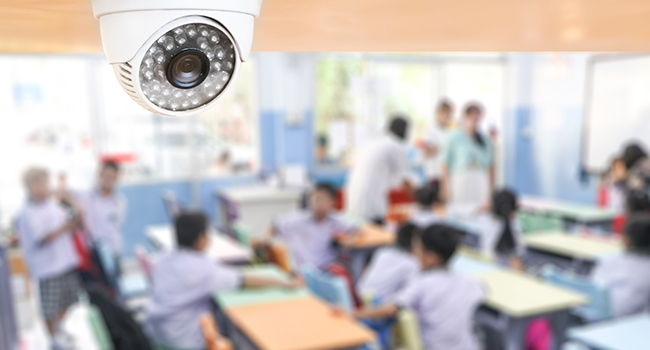
Sheriff's Department to Ask Indiana Schools for Access to Video Cameras
Being able to access school cameras in an emergency would allow the police to locate a shooter or intruder more quickly and learn more key information that would help with a rapid response, according to Porter County Sheriff Dave Reynolds.
- By Jessica Davis
- December 13, 2018
The Porter County Sheriff’s Department is planning to ask each of the day care centers, private schools and seven school districts in the county to give the department access to school video surveillance in an emergency.
Being able to access school cameras in an emergency would allow the police to locate a shooter or intruder more quickly and learn more key information that would help with a rapid response, according to Porter County Sheriff Dave Reynolds.
Reynolds said the proposed plan would let department members pull up each participating school’s layout on a large screen. The layout would show the location of the campus’s doors, images from video surveillance inside the building and information about the streets around the campus.
If the presence of a shooter or intruder is reported, police could immediately access interior images of the campus and find where the intruder is, allowing them to direct first responders directly to the suspect. It would also help give responders an idea of what to expect inside when they arrive, "instead of just pulling up front and running in," Reynolds said.
The system would only be activated in an emergency situation, Reynolds said, as a method to save valuable time. "Anything we can do to reduce seconds to our response, will save lives," he said.
The proposal comes 14 years after a Valparaiso High School freshman attacked fellow students with a machete and tree saw in 2004 and left seven students wounded before school administrators were able to tackle him in the hallway. Valparaiso Community Schools is one of the districts supporting the program.
"We are privileged to have the opportunity to assist law enforcement through the SafeCam project," VCS Superintendent Julie Lauck said.
School officials and law enforcement continue to work on the best plan of action when responding to an active shooter on campus.
During a Safe Schools Commission meeting held before the school year began, Noblesville Police Chief Kevin Jowitt told local educators and law enforcement to have large numbers of chest seals, tourniquets and other trauma medical supplies available and to train staff to handle “combat injuries” in the event of a school shooting.
Jowitt also said it was important to try to recognize and report warning signs before a student commits gun violence.
About the Author
Jessica Davis is the Associate Content Editor for 1105 Media.